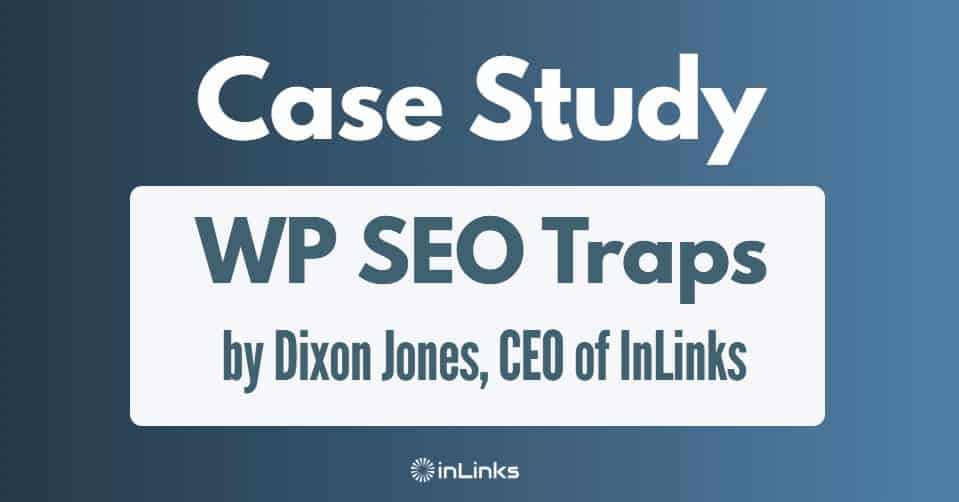Over the holiday break, I ran and recorded a case study to take an old piece of content, run it through the inLinks system and update it, then record the changes to the SERPs.

The results (if you don’t want to watch how it was done):
- The phrase “WP SEO Traps” went from position 9 to position 1 (or 2) depending on how I checked)
- The phrase “SEO Traps” wen from the 90s to position 12.
Download the Case Study
Here’s a one page PDF if you need to convince a boss.
Summary
The study took 12-year-old content and optimized the page around the phrases “SEO traps” and “WP SEO Traps”. By reconstructing the content based on related topics (entities) and automating the injection of content schema and internal links from within the website, the page improved its visibility within days, to position 1 for the phrase “WP SEO Traps”. No external links were added to the site.
Methodology
The following URL was originally written in 2007 and remained in the Internet over the 13-year interim. https://dixonjones.com/seo/seo-traps-in-wordpress/. A video was recorded showing where the phrase ranked for the phrases “WP SEO Traps” and the more generic phrase “SEO Traps”. The site was then analysed using the inLinks content analysis tool and the content was rewritten around the phrase “SEO Traps”. At the same time, the URL was associated with the concept of “Wordpress” and content schema created by inLinks was reviewed and amended on the video. The internal links generated were not reviewed.
Six days later, the SERPs were revisited, again on Video, to record visible changes to the SERPs.
The changes in the SERPs were also confirmed by SEMRush’s rank analysis system.
Results after 6 days:
- The page moved from position 90 to position 12 for the phrase “SEO Traps”
- The page moved from position 9 to position 1 for the phrase “WP SEO Traps”
The video initially showed slightly worse results, which were corrected the same day by observers noting that anonymized views showed stronger results.
Observations and further opportunities
It was noted that the phrase “WP SEO Traps” is not especially in demand as a search phrase and that in a real-world, a more competitive phrase might yield more traffic.
The content was not edited to 100% of the recommendations from the inLinks content analyzer but was simply improved to a reasonable standard. Further optimization remains possible.
Further success might be achieved by reviewing the internal links generated by inLinks to the page and by ensuring these referring pages are also re-indexed by Google.
About inLinks
inLinks.net is a Freemium SEO technology which generates knowledge graphs for sets of web pages and uses a semantic or topic-based approach (rather than a keyword-based approach) to help increase visibility and engagement in the search results. The company is based in Cranfield University in England and Carros in France. The tool automates internal link graphs, content schema generation and on-page content analysis.





Thanks for the case study Dixon, I am still learning the ropes with the tool but from your insights in the SEO facebook groups, I know and NOW HAVE SEEN how far ahead inLinks is for Content, Schema and internal linking!! Great position jump in the SERPs here!
Thanks Chris. I hope you and others get similar results. We’d love to share and link to any third party case studies.
Thanks for sharing Dixon. Have you tried running tests with just content changes and/or just schema changes?
Not yet – but of course I should!
I have some data on the first 10 sites that put > 100 pages on the inLinks system though… that makes for encouraging reading and will be my next writeup. I am hoping others will also be able to provide independent tests, because obviously the tool vendor is a biased participant! 🙂
Leave a Reply
Want to join the discussion?Feel free to contribute!